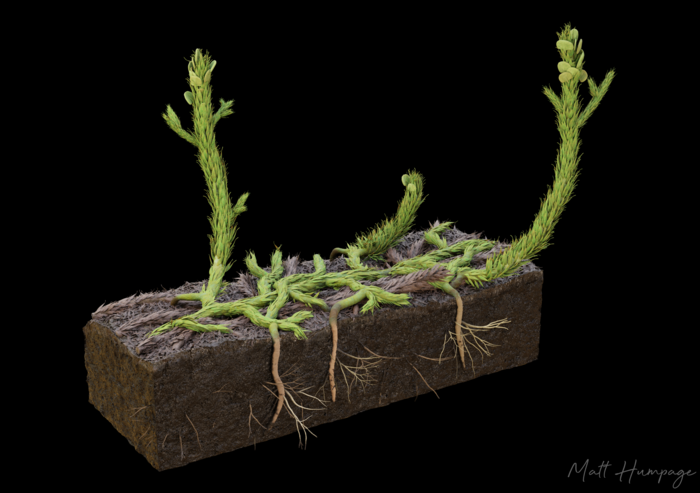400-million-year-old fossil reveals how first roots emerged in Earth’s early plants
The ancient plant’s roots developed in an ‘entirely different way’ than how they grow in modern plants

Your support helps us to tell the story
This election is still a dead heat, according to most polls. In a fight with such wafer-thin margins, we need reporters on the ground talking to the people Trump and Harris are courting. Your support allows us to keep sending journalists to the story.
The Independent is trusted by 27 million Americans from across the entire political spectrum every month. Unlike many other quality news outlets, we choose not to lock you out of our reporting and analysis with paywalls. But quality journalism must still be paid for.
Help us keep bring these critical stories to light. Your support makes all the difference.
A new study of a 400-million-year-old plant fossil from a geological formation in Scotland has shed light on the development of the earliest known form of roots.
The evolution of the first plant roots dramatically impacted our planet and atmosphere, resulting in transformative ecological and climate change, said the research, published last week in the journal eLife.
In the study, scientists, including a team from the University of Oxford, developed a three-dimensional reconstruction of the Asteroxylon mackiei plantfrom the Devonian era, about 400 million years ago, based exclusively on fossil evidence.
The fossil, preserved in a type of flint near the village of Rhynie in Aberdeenshire, Scotland, represents the most structurally complex ancient plant from the area and had developed roots and other types of axes, from which roots branch, noted the researchers.
The reconstruction revealed the organisation of the three distinct branching axis types of the plant – leafy shoot axes, root-bearing axes, and rooting axes – in its body plan.
From the 3D reconstruction, scientists studied both the anatomical and developmental properties of this mysterious fossil and found the roots developed in an entirely different way in these plants than how they do in modern plants.
“These are the oldest known structures that resemble modern roots and now we know how they formed. They developed when a shoot-like axis formed a fork where one prong maintained its shoot identity and the second developed root identity,” Liam Dolan, study lead author from Gregor Mendel Institute, said in a statement.
“No roots develop in this way in living plants, demonstrating that this mechanism of root formation is now extinct,” Dr Dolan added.
Understanding the structure and evolution of A mackiei can provide insights into events at a key time in Earth history just after plants colonised the dry surfaces of the continents and began to spread across the land, the researchers said.
“Their evolution, radiation and spread across all continents had a dramatic impact on the Earth system. Plant roots reduced atmospheric CO2 levels, stabilized the soil and revolutionized water circulation across the surfaces of continents,” Alexander J Hetherington, a co-author of the study from the University of Edinburgh, said in a statement.
“Using digital 3D techniques it is possible for the first time to visualise the complex body plan of A mackiei allowing us to discover how these enigmatic plants developed. It was brilliant to finally see details that had previously been hidden,” Dr Hetherington added.
Subscribe to Independent Premium to bookmark this article
Want to bookmark your favourite articles and stories to read or reference later? Start your Independent Premium subscription today.
Join our commenting forum
Join thought-provoking conversations, follow other Independent readers and see their replies
Comments